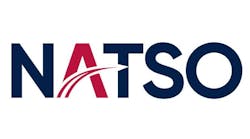In October, Euro 5 emission standards go into effect for EU (European Union) countries, although thanks to incentives for early compliance such as road toll reductions in Germany and tax benefits in Denmark, there are already thousands of Euro 5 compliant vehicles on the road. Most manufacturers have relied exclusively upon SCR to meet Euro 4 and Euro 5 limits for NOx and particulates, including DAF, Iveco, Mercedes Benz, Renault and Volvo.
Scania and MAN currently offer both EGR and SCR solutions, in part to meet the needs of customers in countries where SCR is not currently available. Scania, however, has said that it considers EGR to be its long-term solution.
For 2010 in the U.S., however, SCR alone won’t be enough to get the emissions reduction job done. U.S. standards are stricter than European standards and will remain so until 2012 when Euro 6 will bring European standards much closer to the U.S. 2010 limits (and to Japan’s 2009 standards).
“In Europe, they can use just SCR now because the standards are not as severe as they are in the U.S.,” said Gary M. Parsons, global OEM and industry liaison manager for Chevron Ornite Company LLC. “SCR systems are 80% to 90% efficient at dropping down NOx, so they can let a low level of particulates and a fairly high level of NOx out of the engine into the exhaust stream and then use SCR after-treatment to knock down the NOx to required levels.
“By Euro 6, however, that won’t be the case anymore,” he added. “They won’t be able to get all the way with SCR alone either. It will very likely cost a lot to go from Euro 5 to Euro 6, just as it did to achieve the 2007 emissions standards in the U.S. Road toll reductions and other incentives are not apt to be enough to offset the price difference for Euro 6 trucks, so Europe may experience a pre-buy in 2011.”


